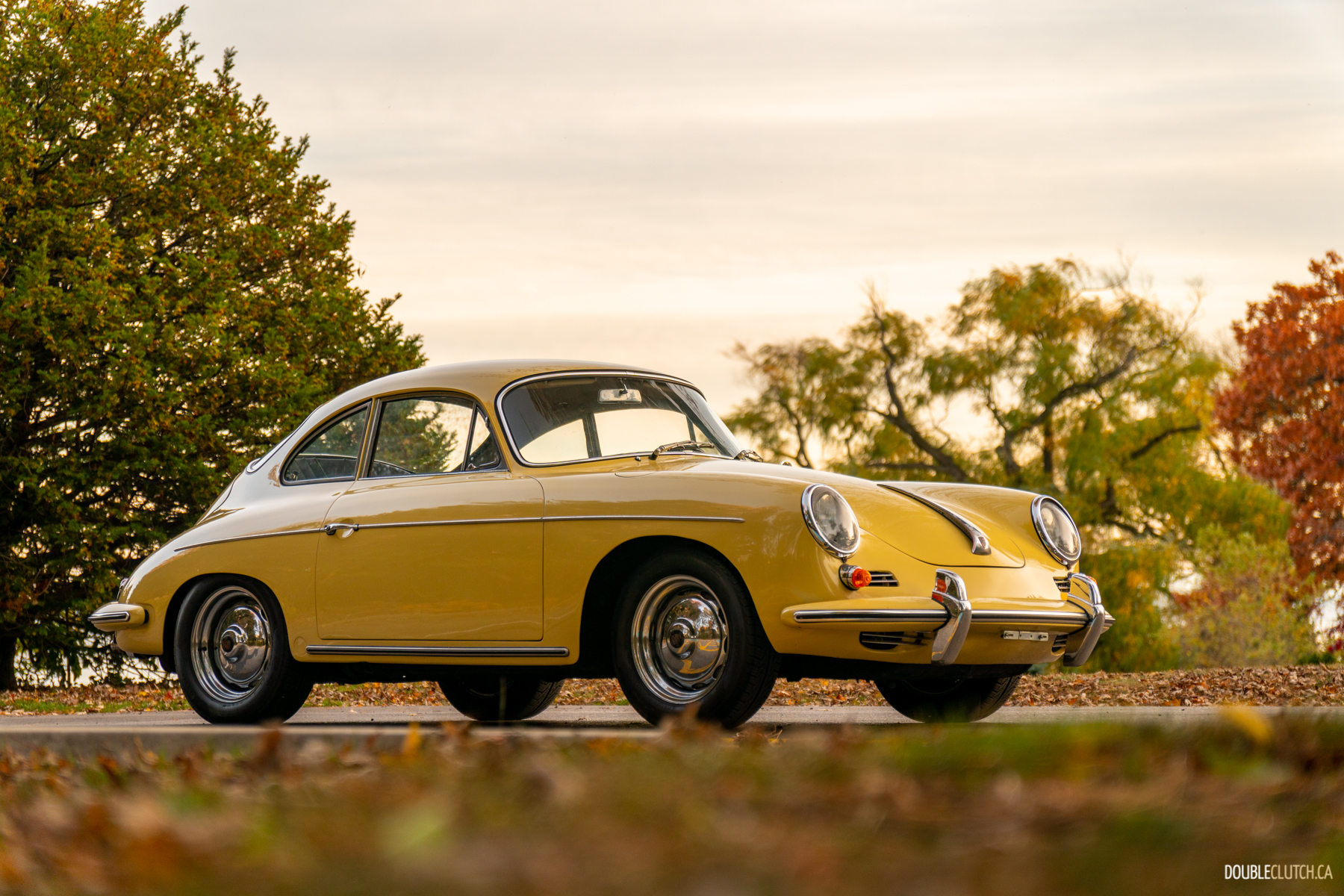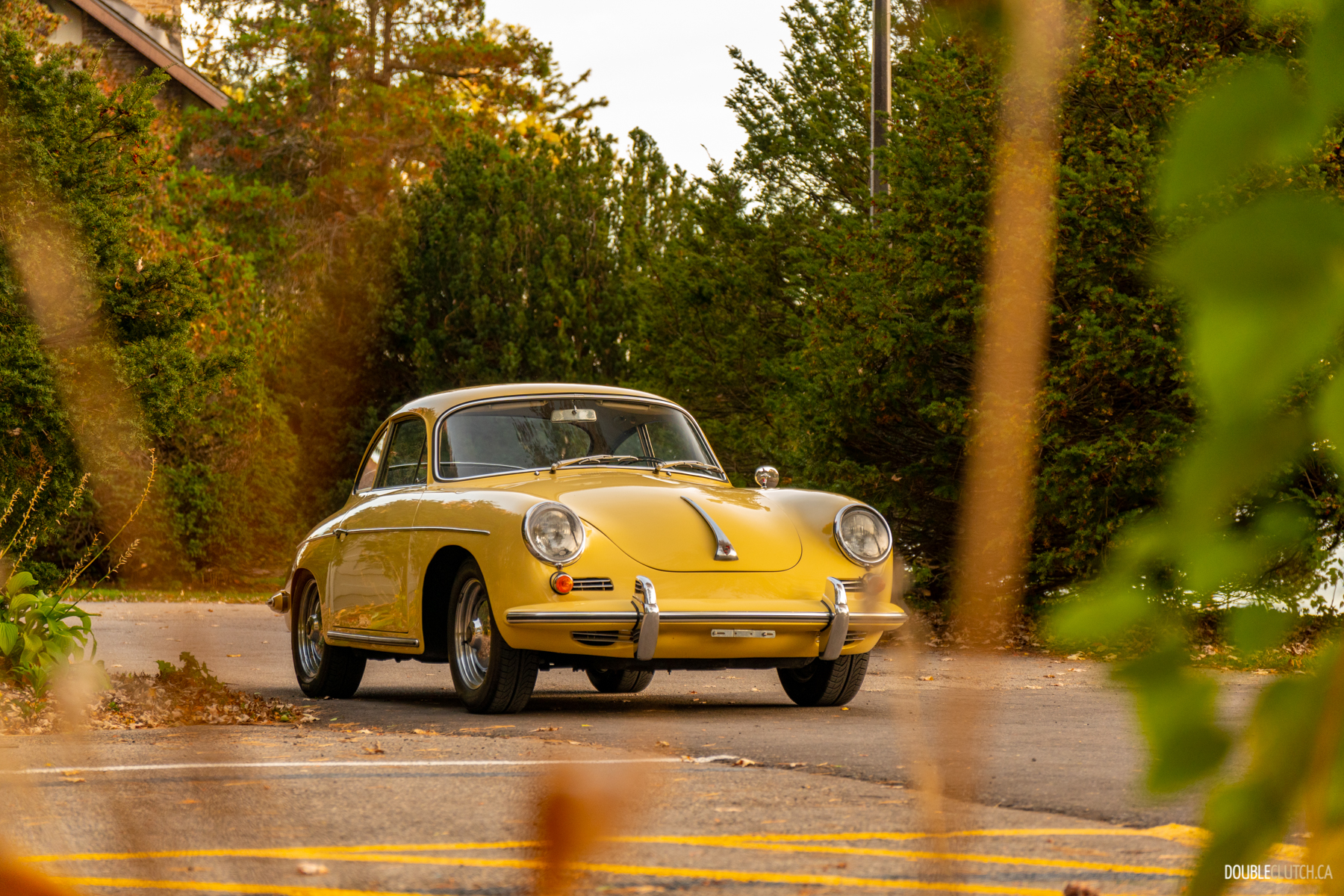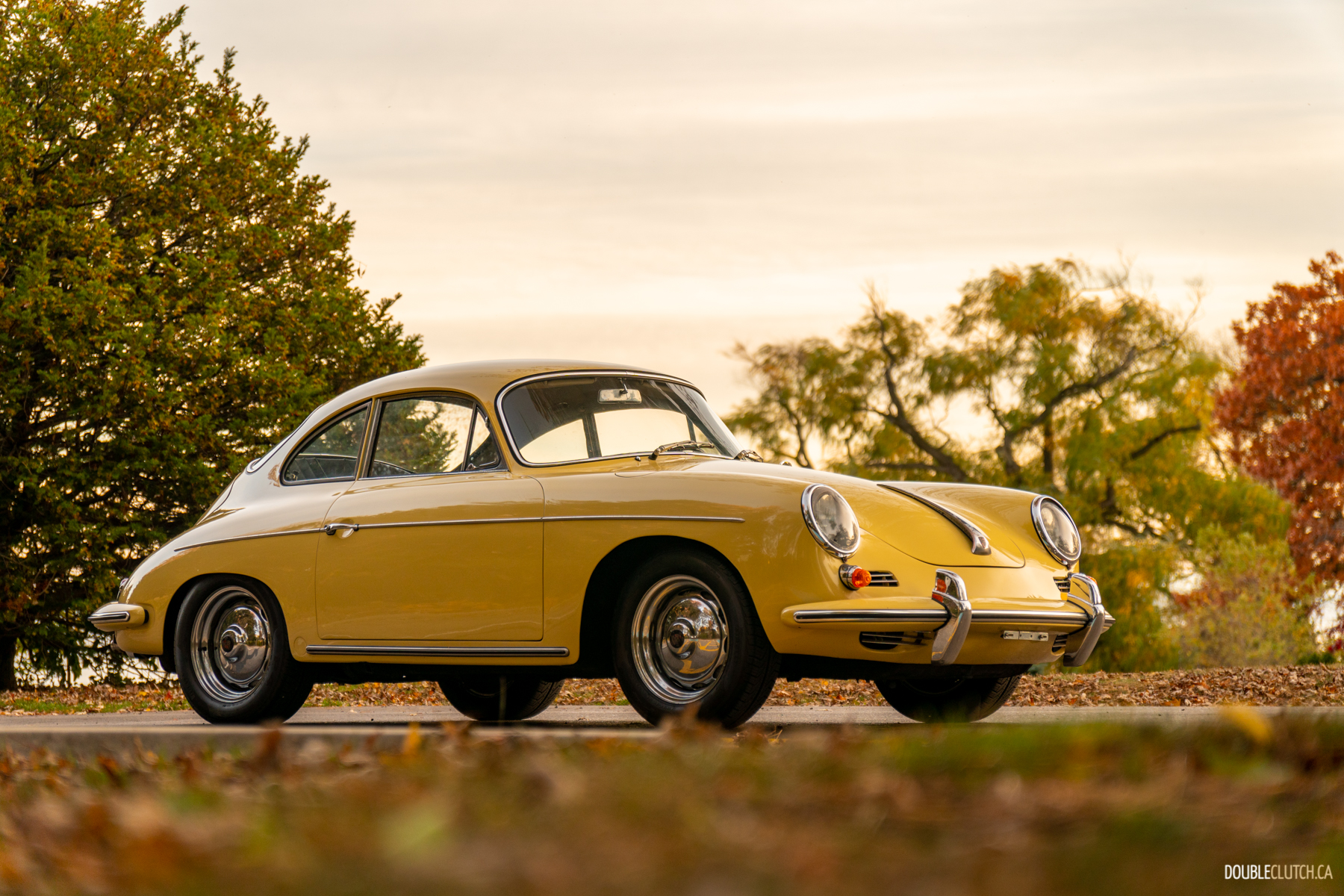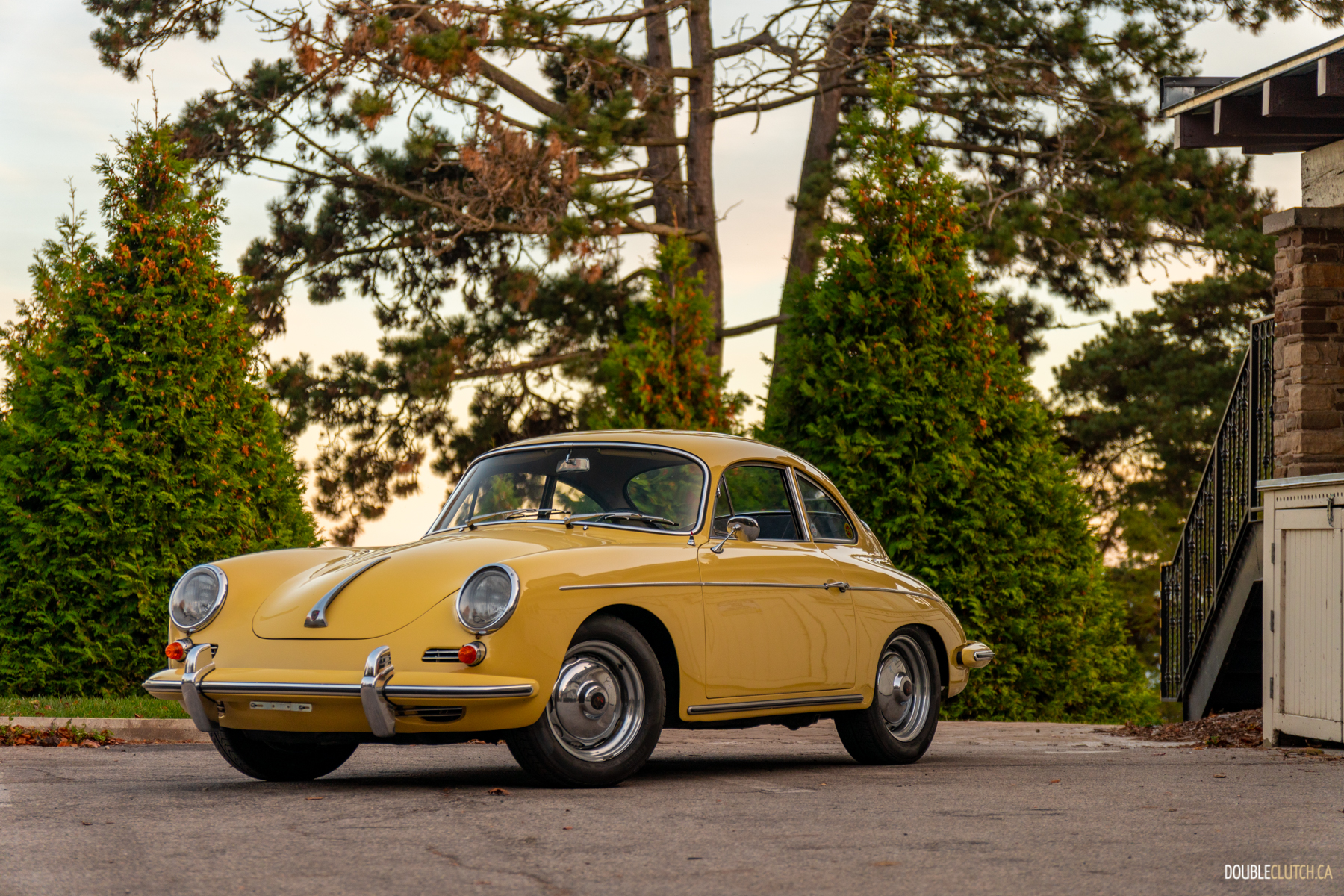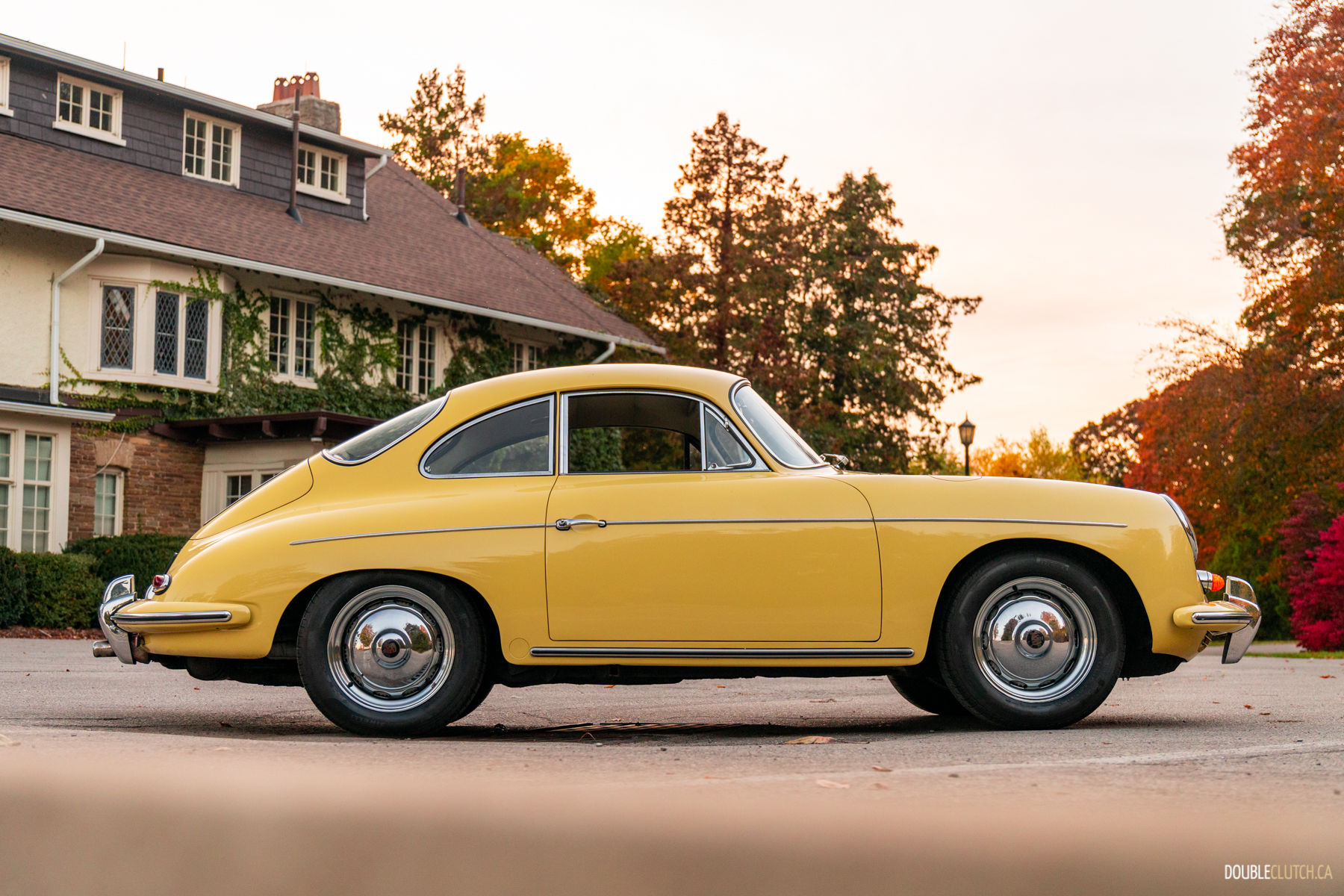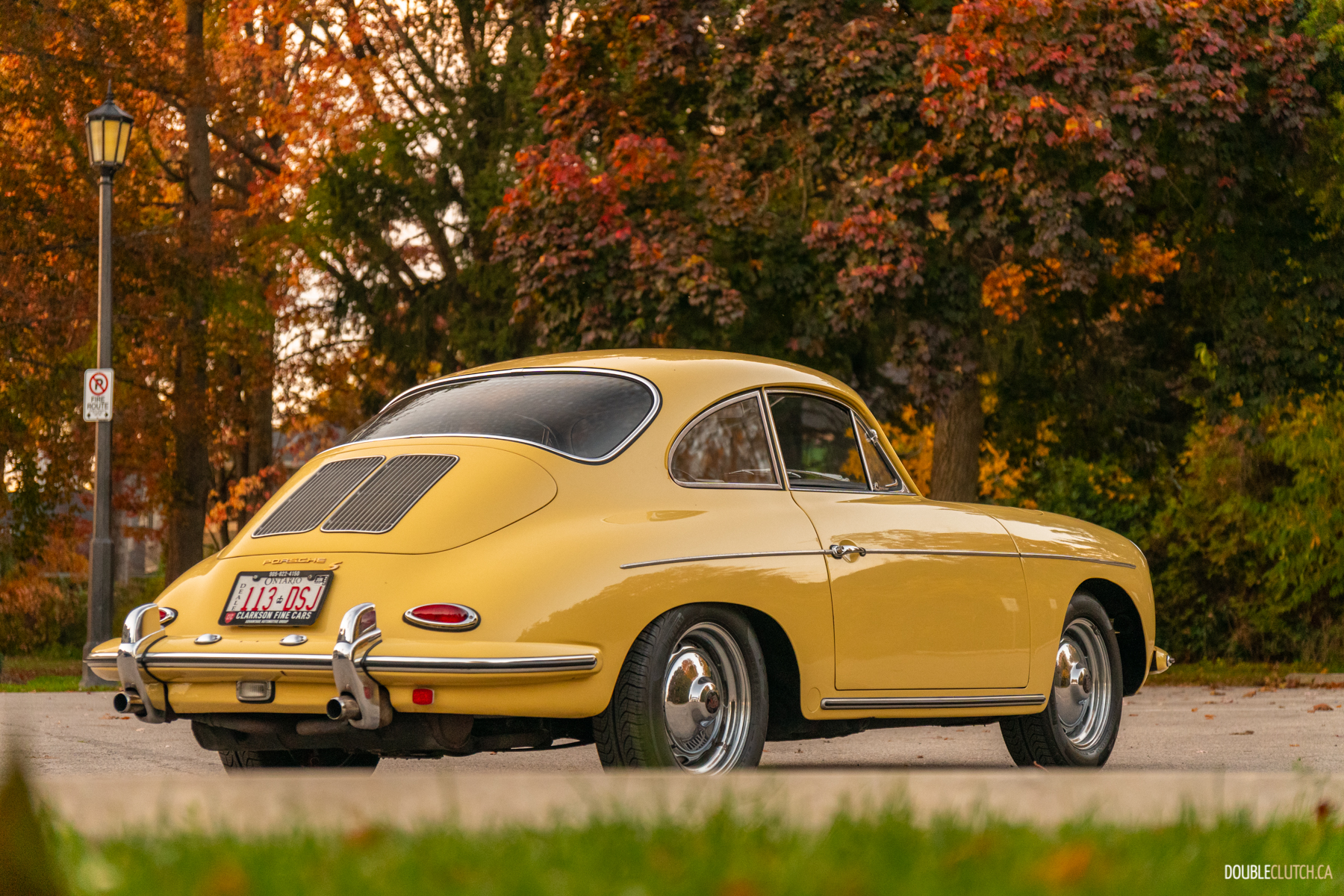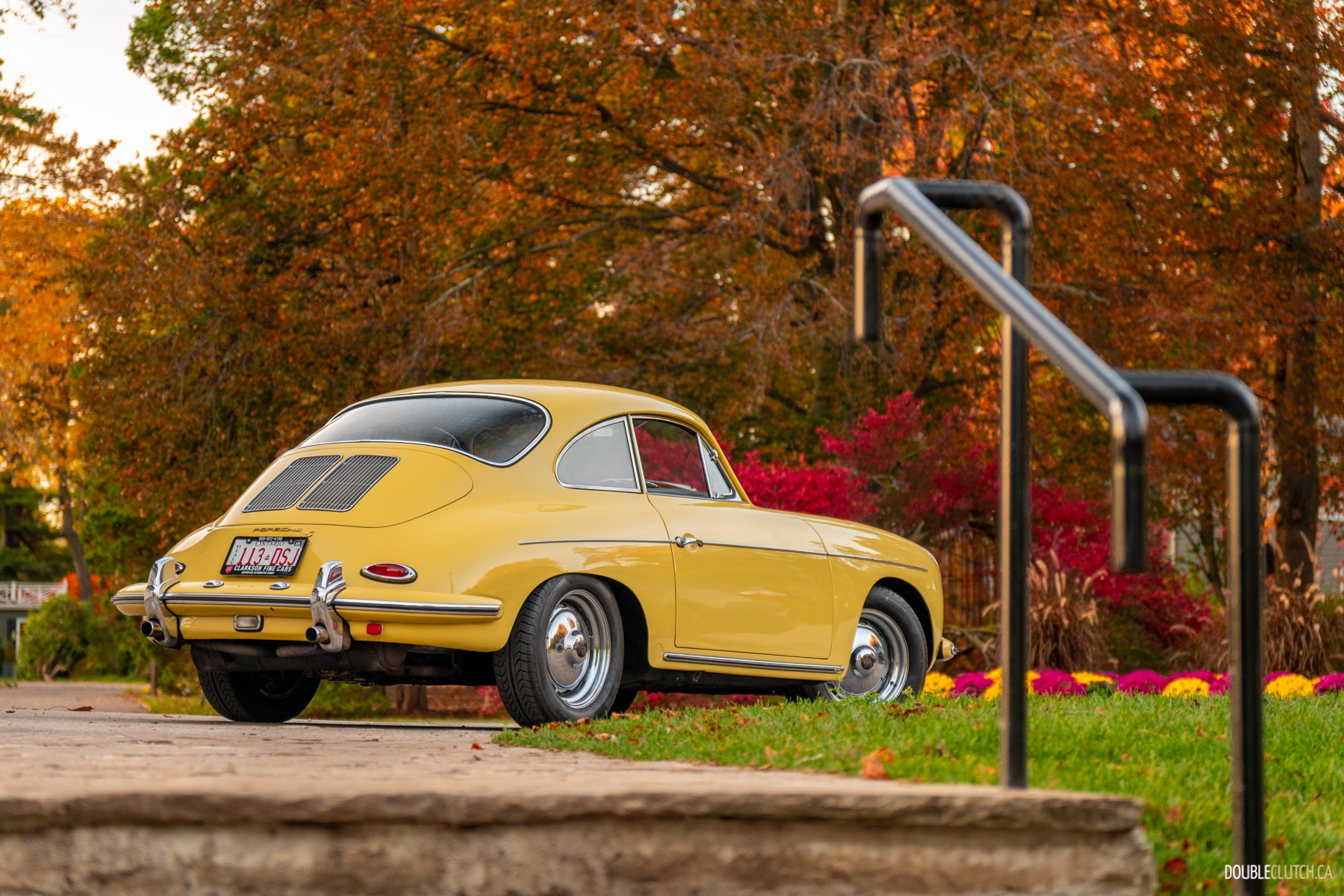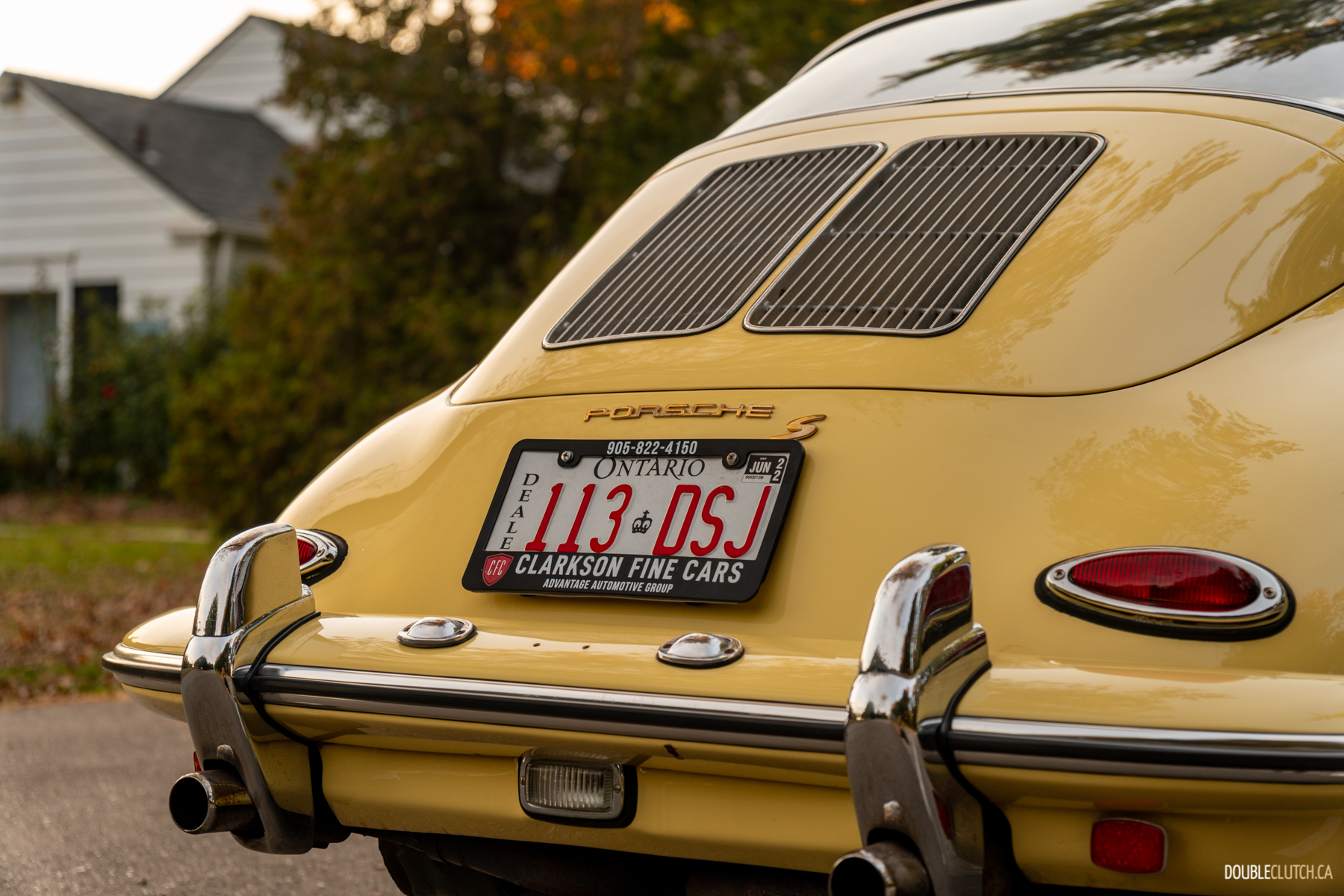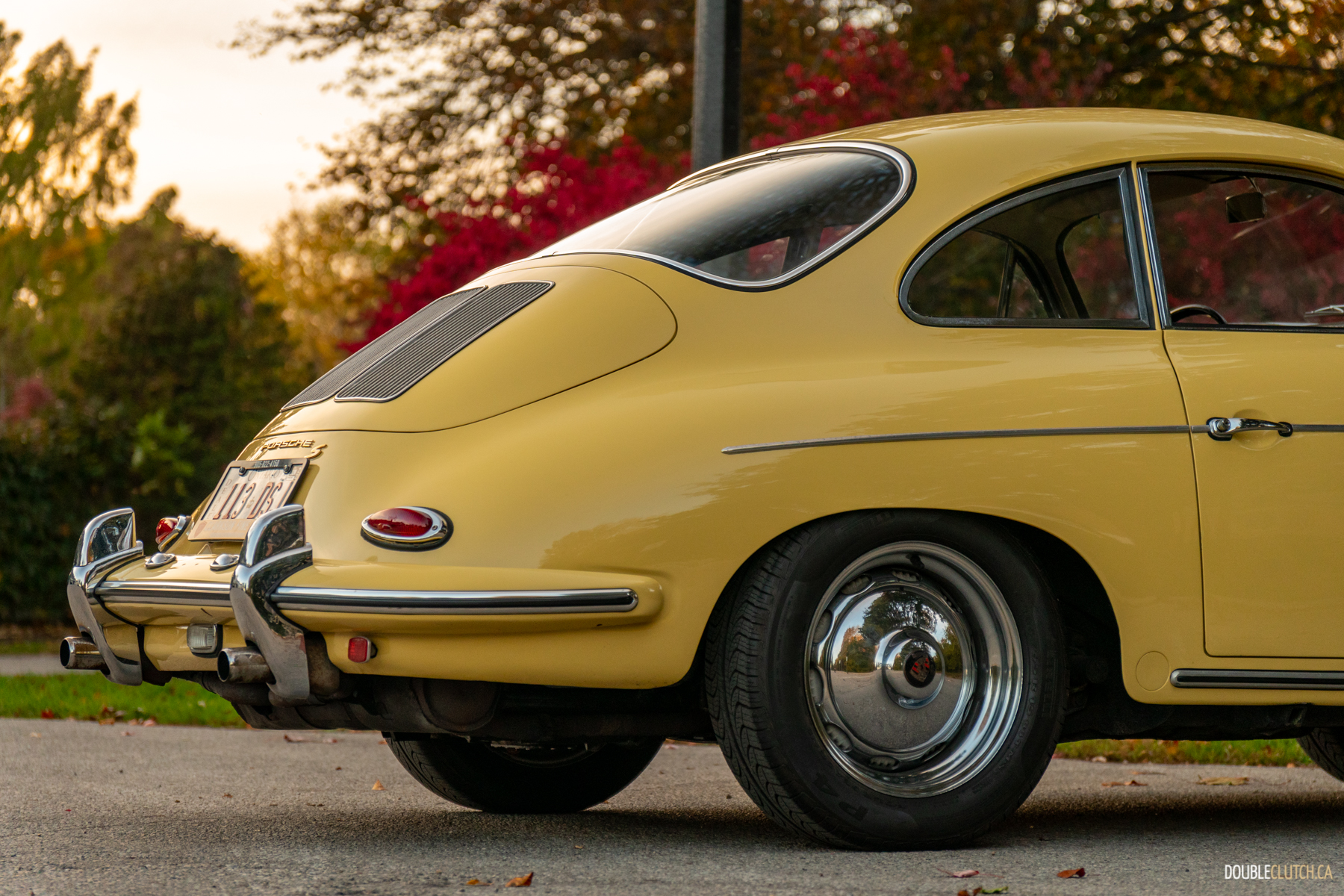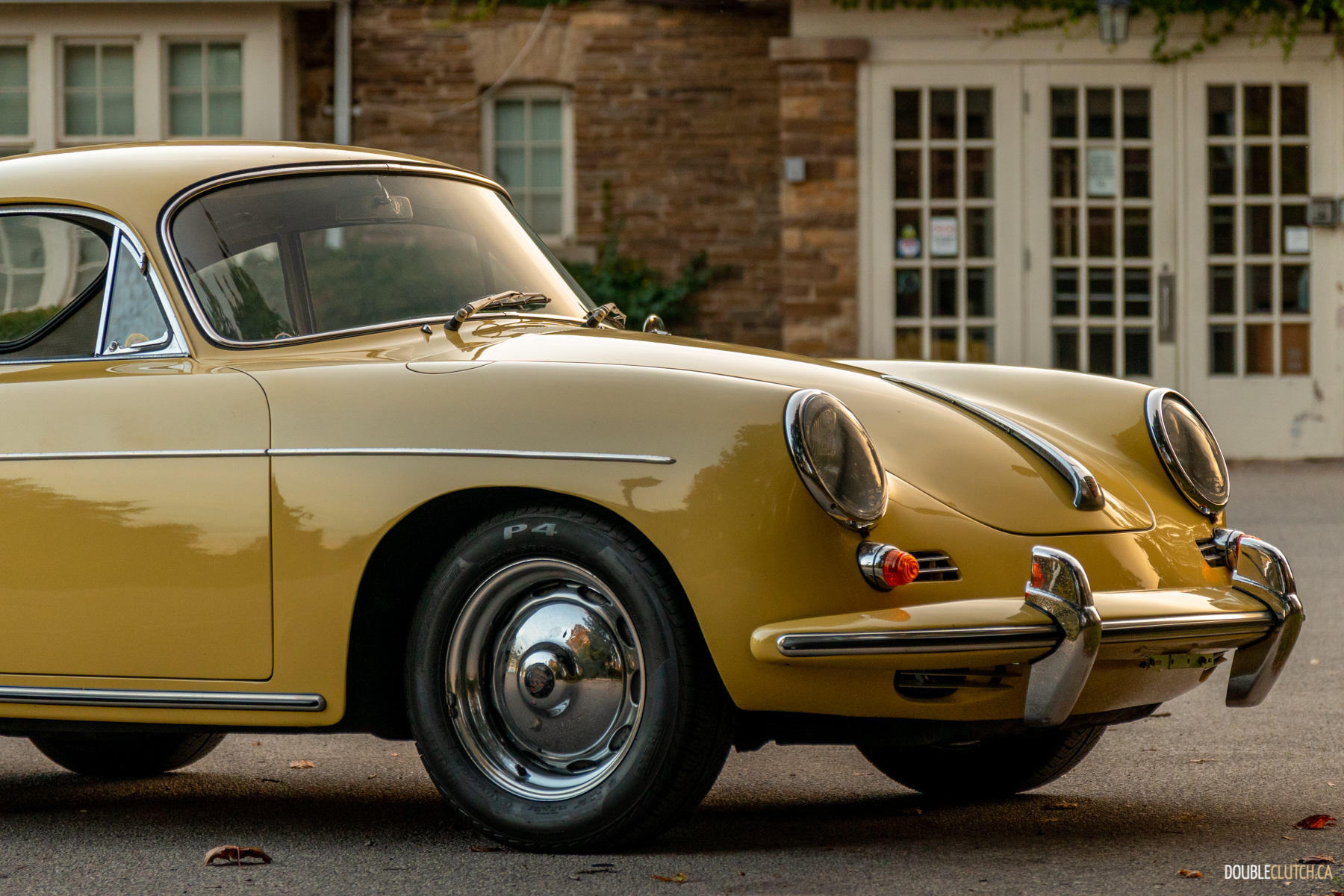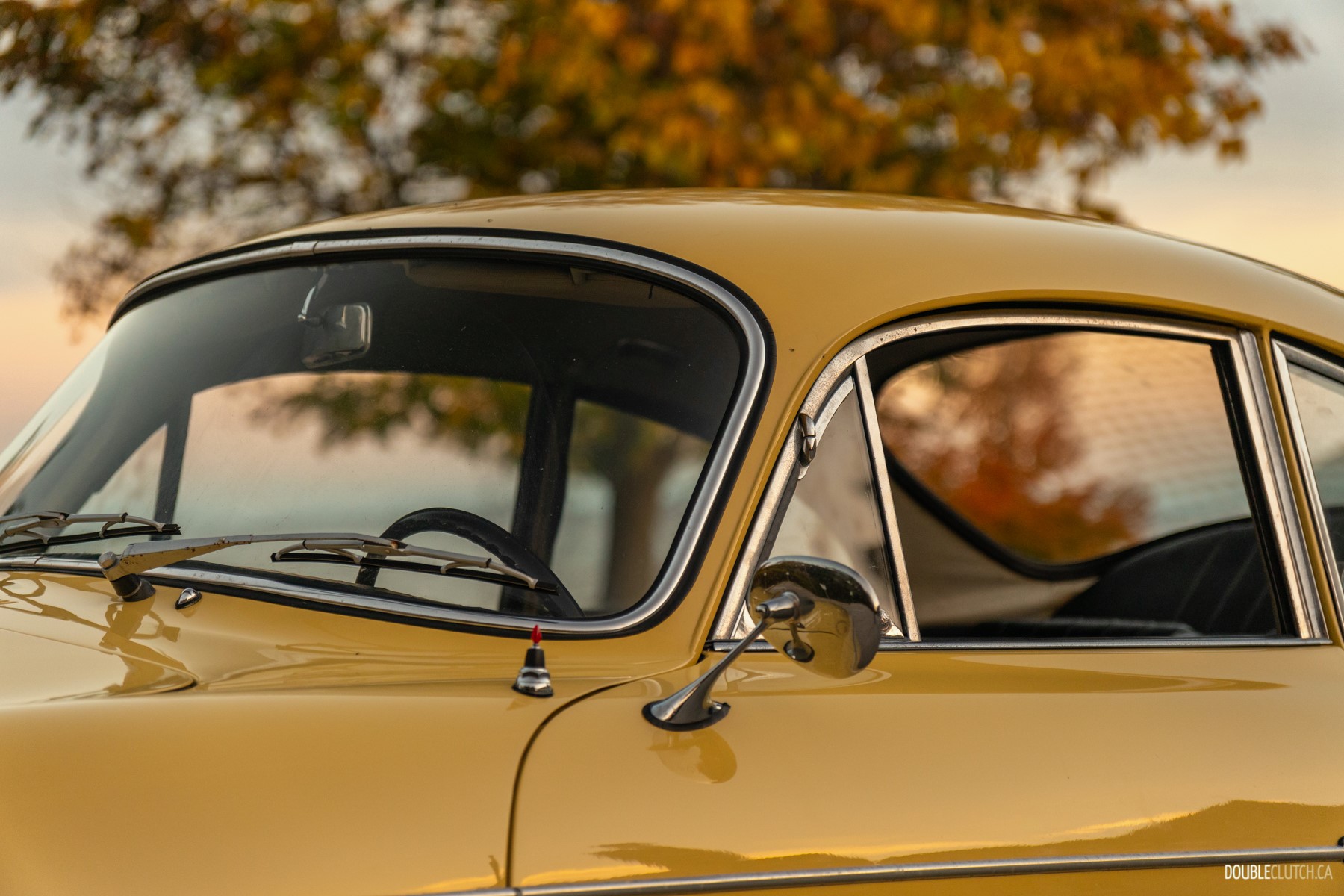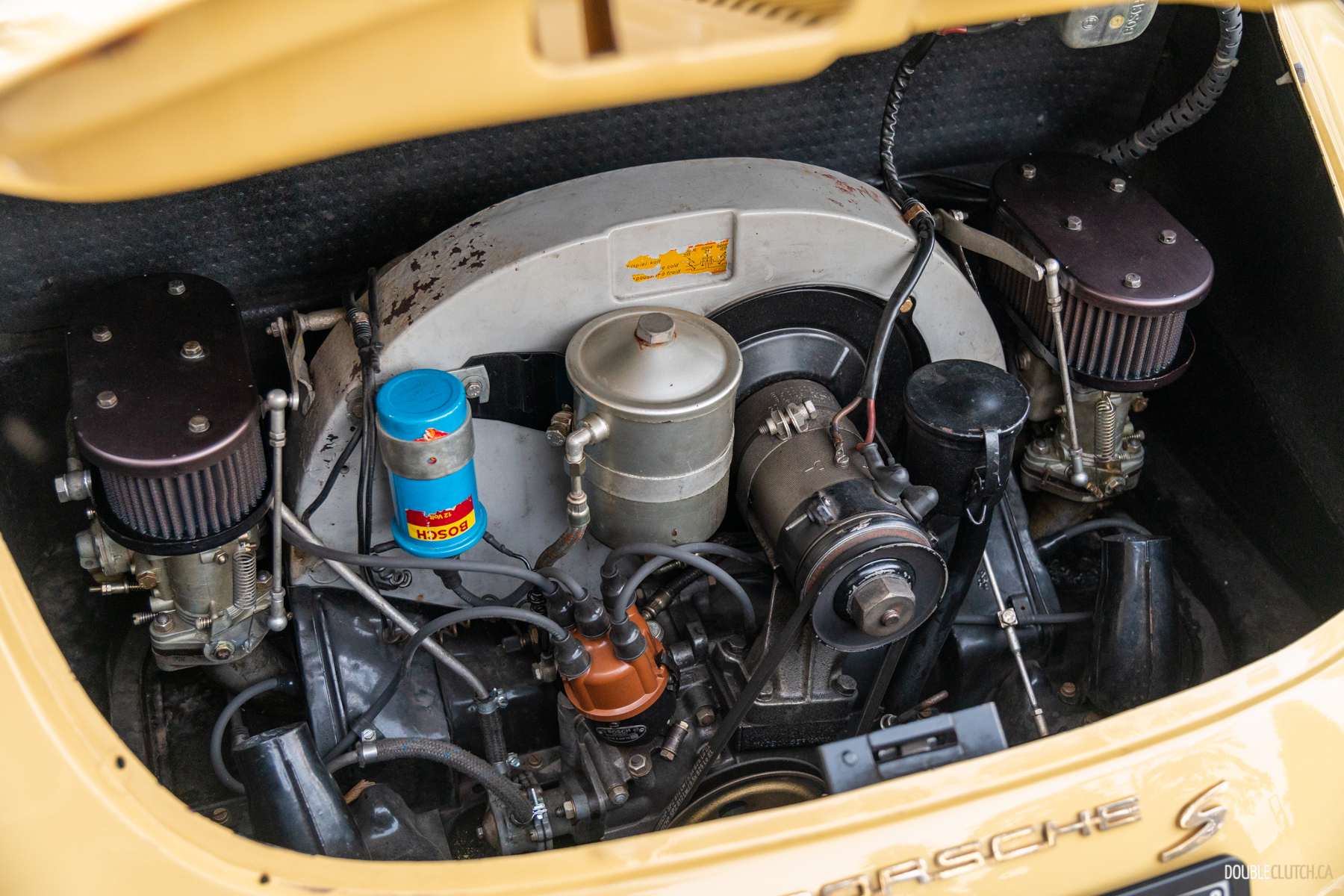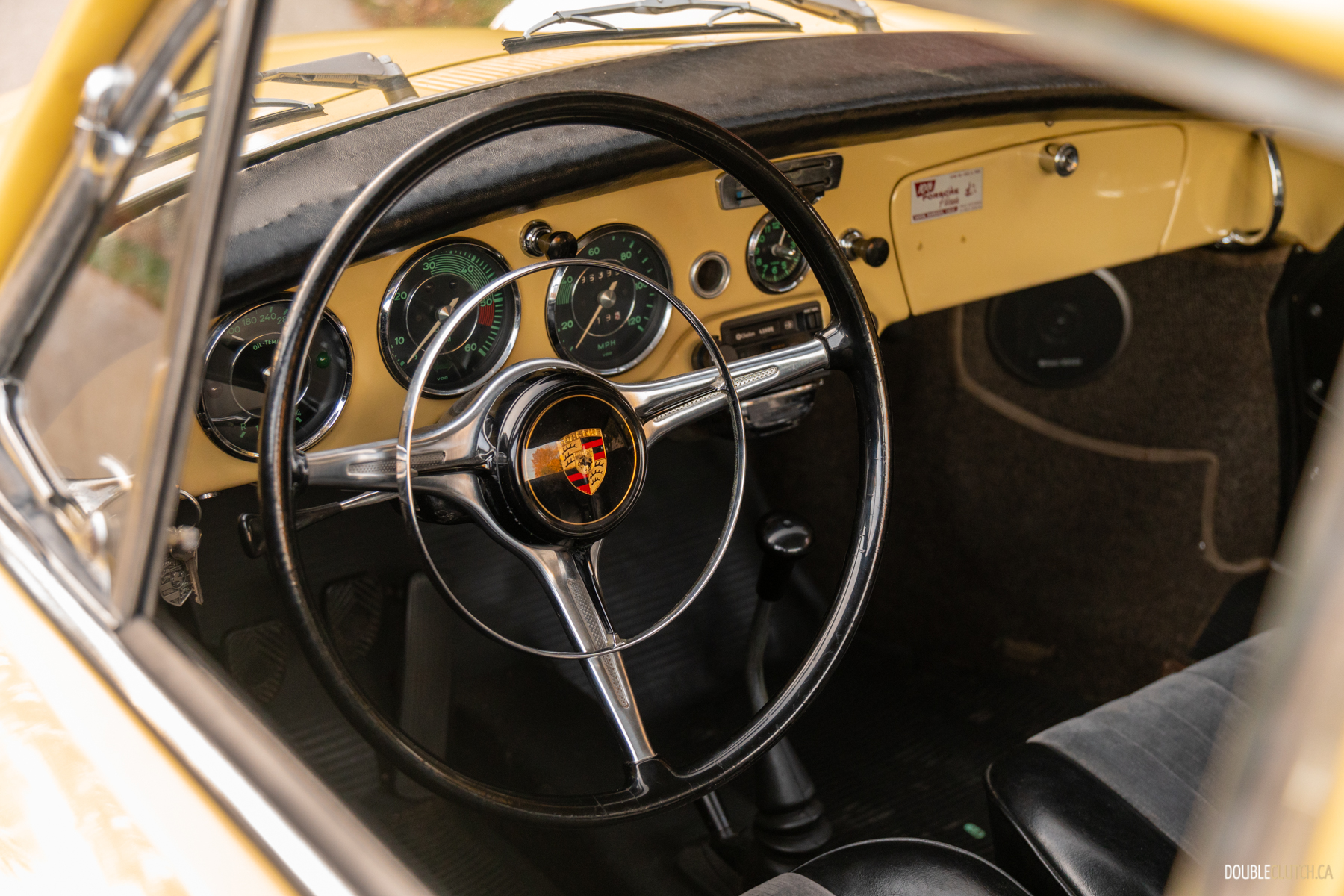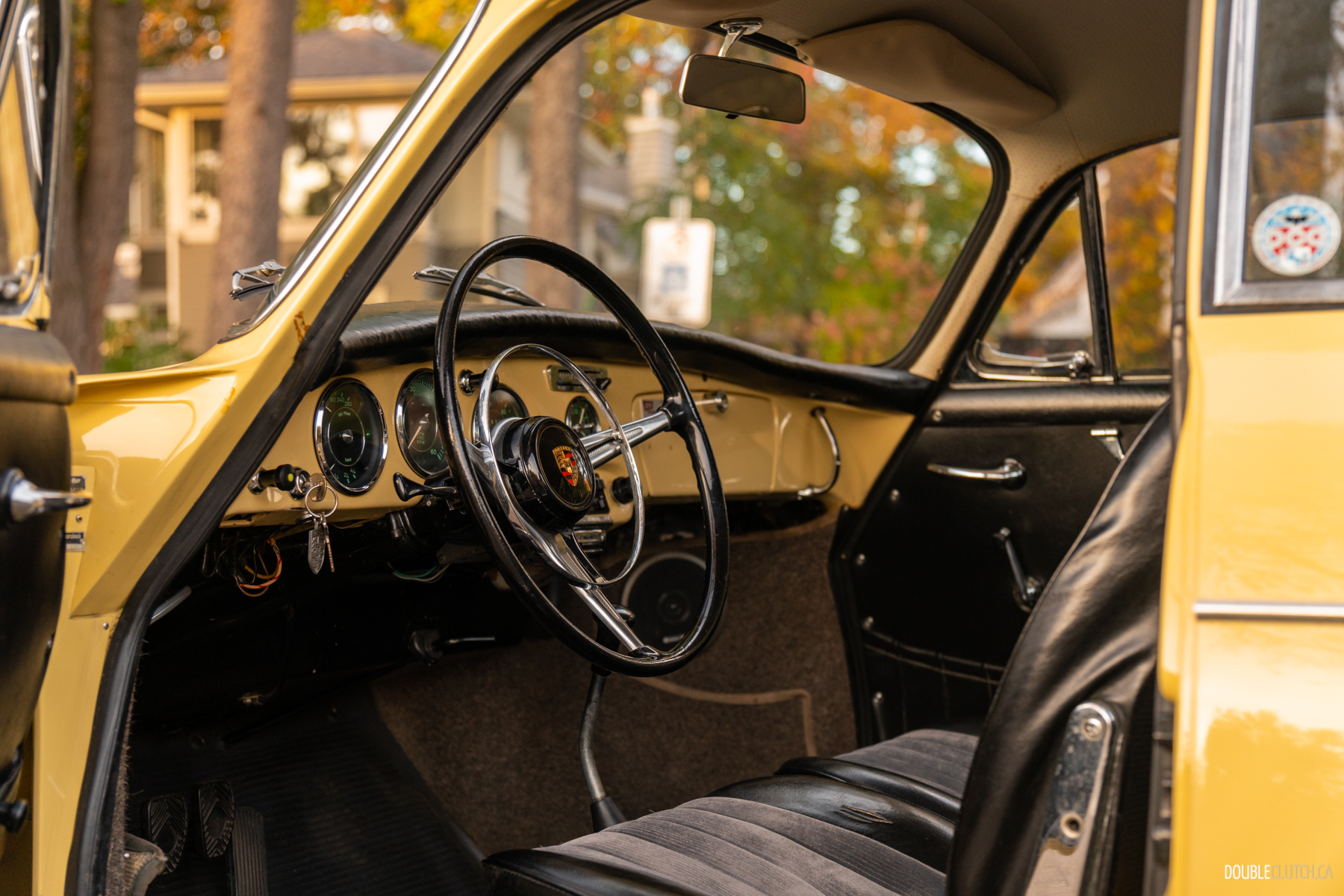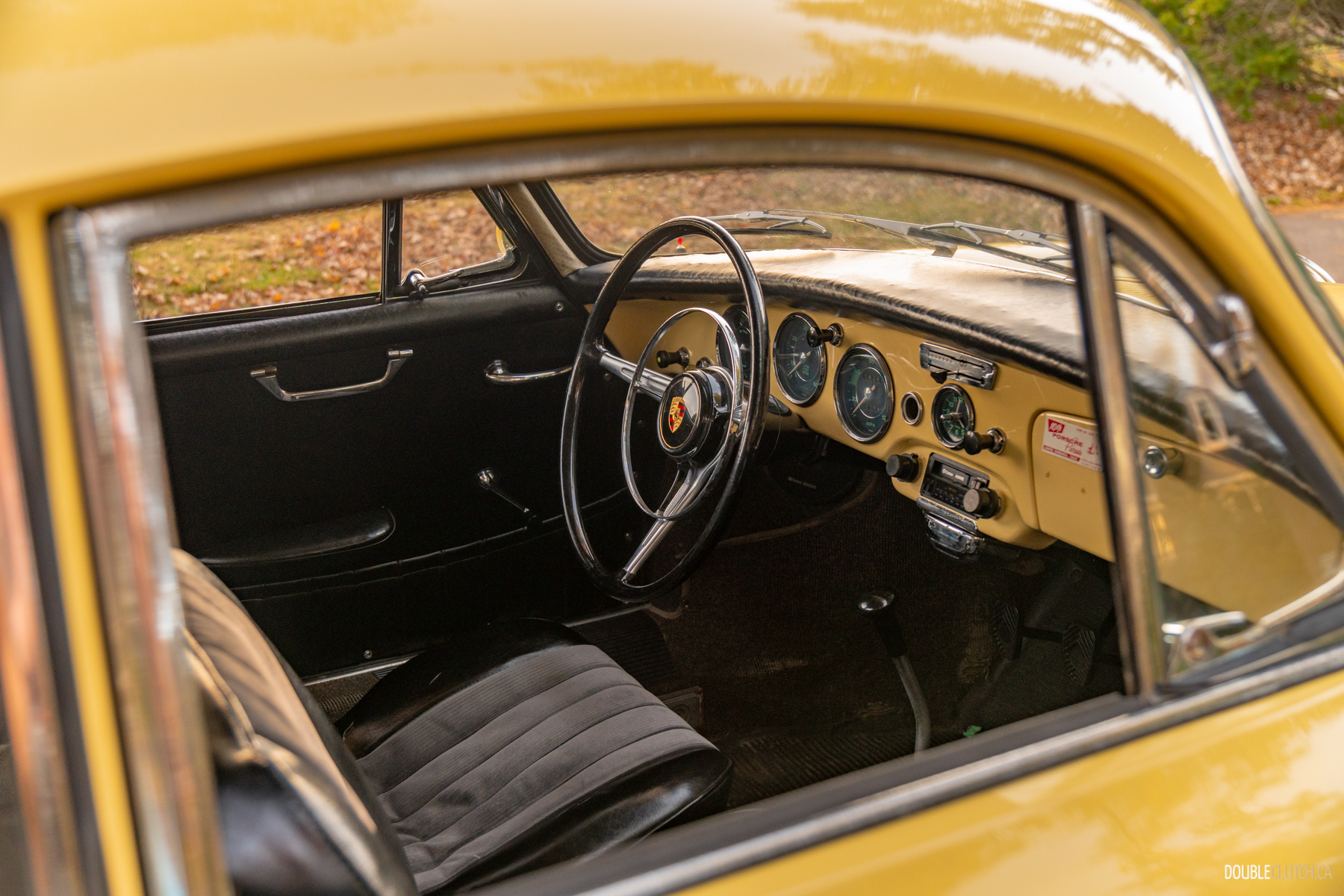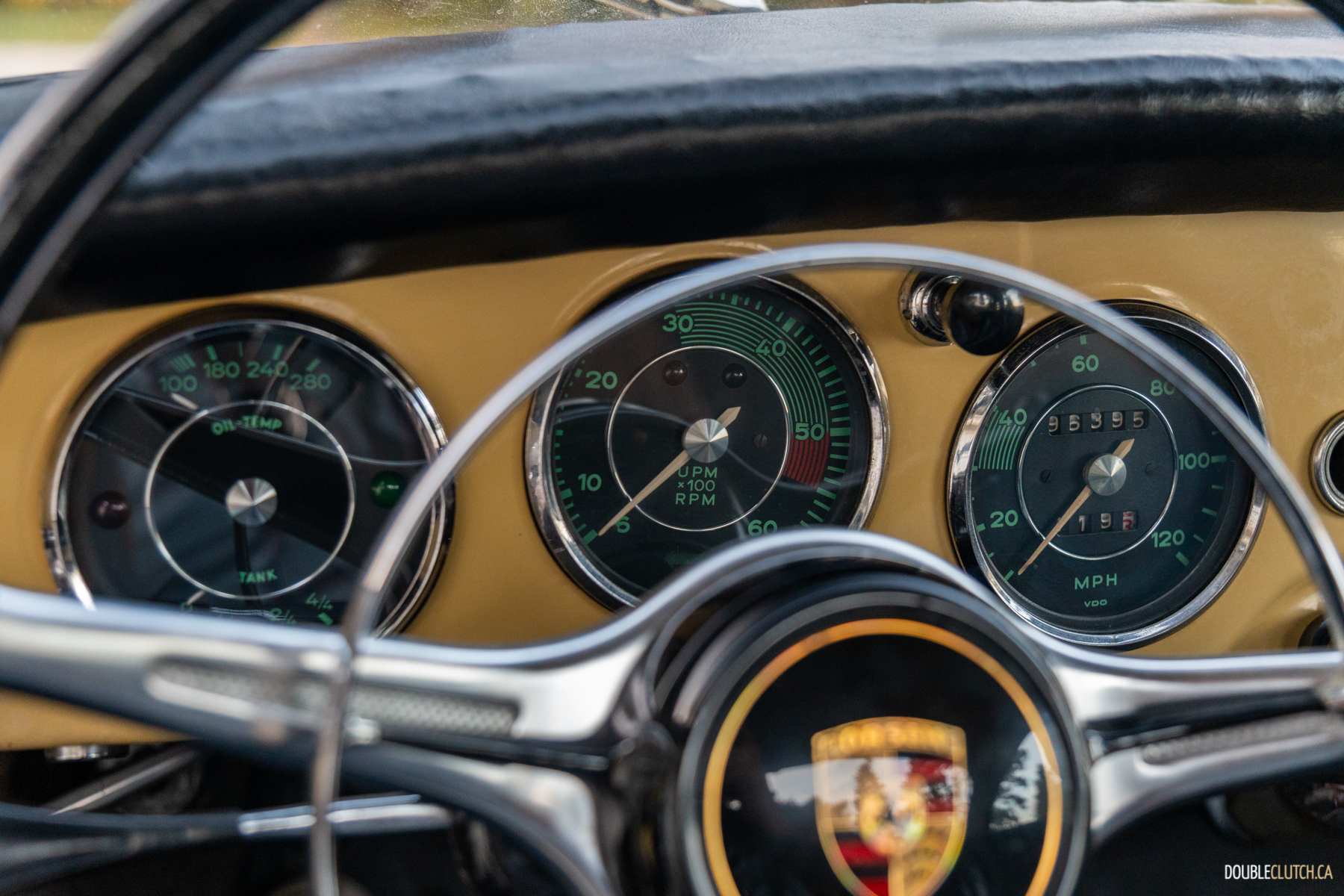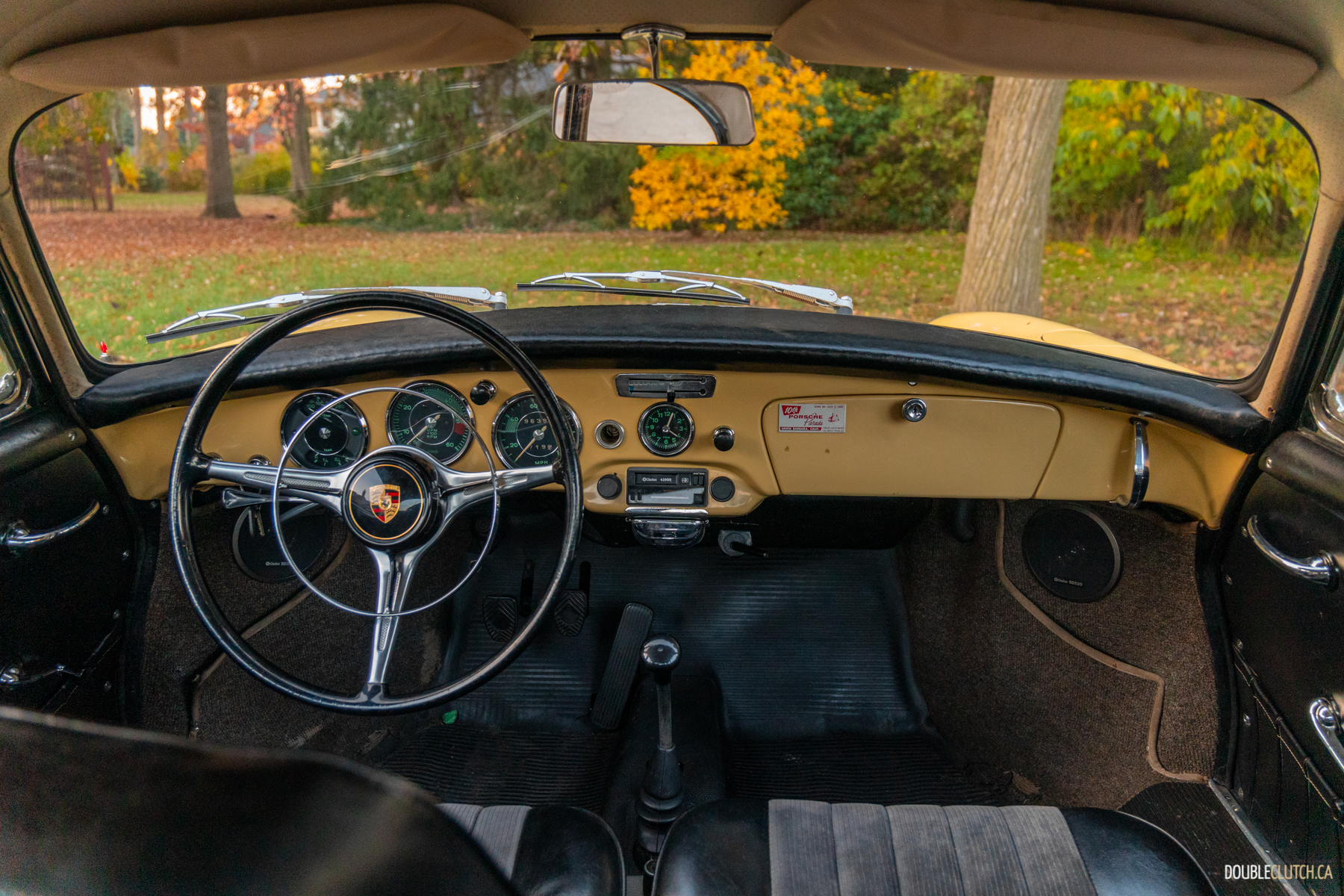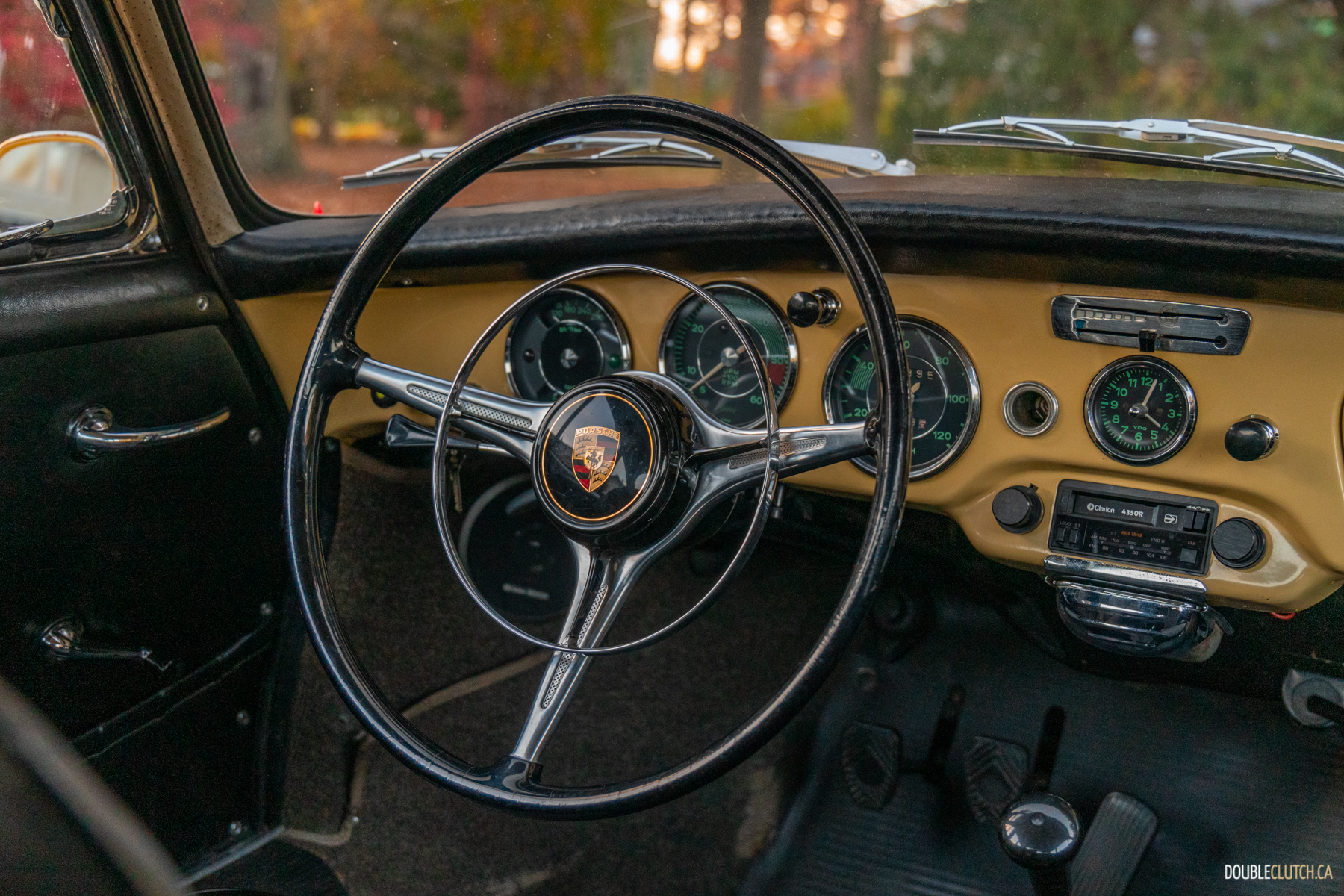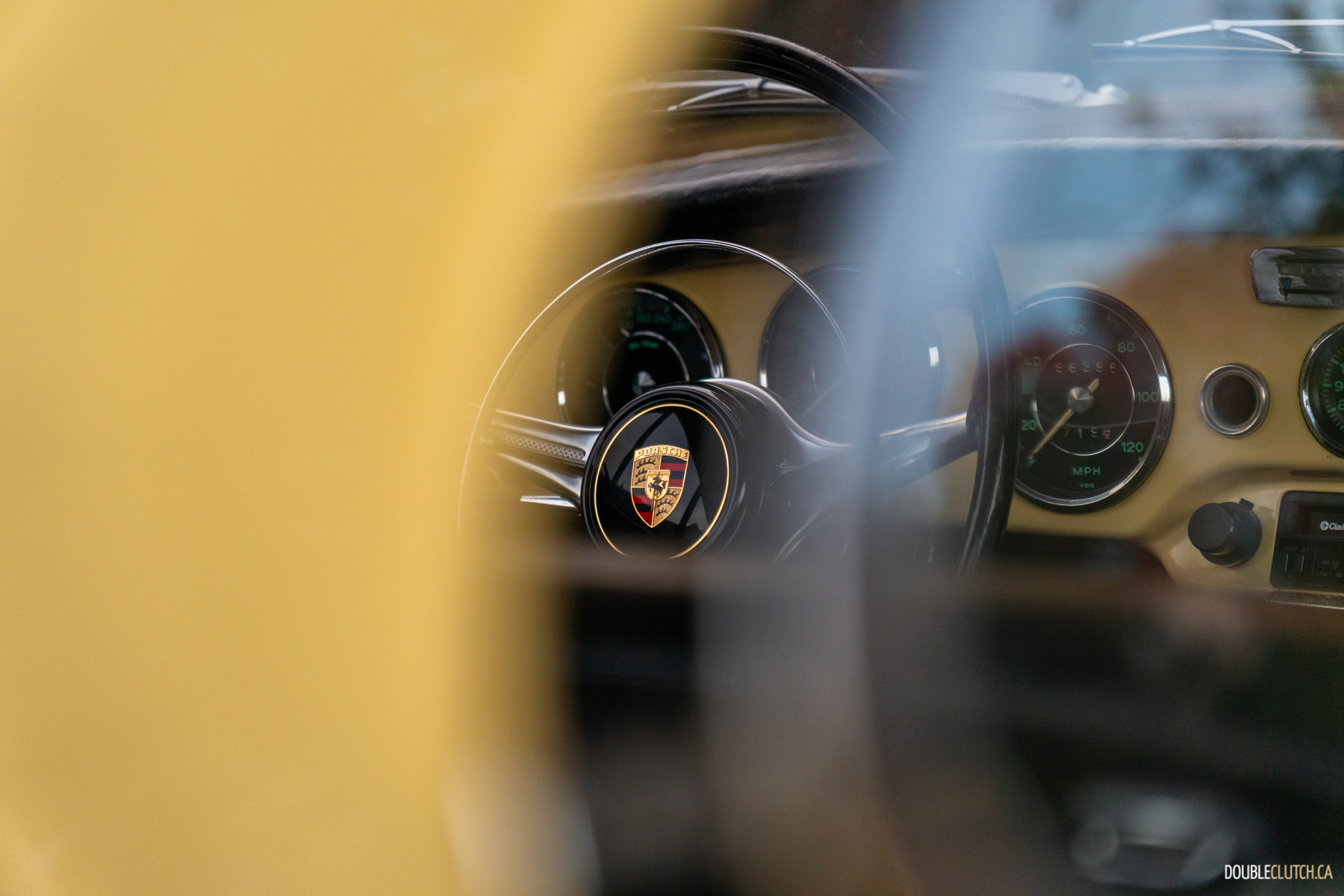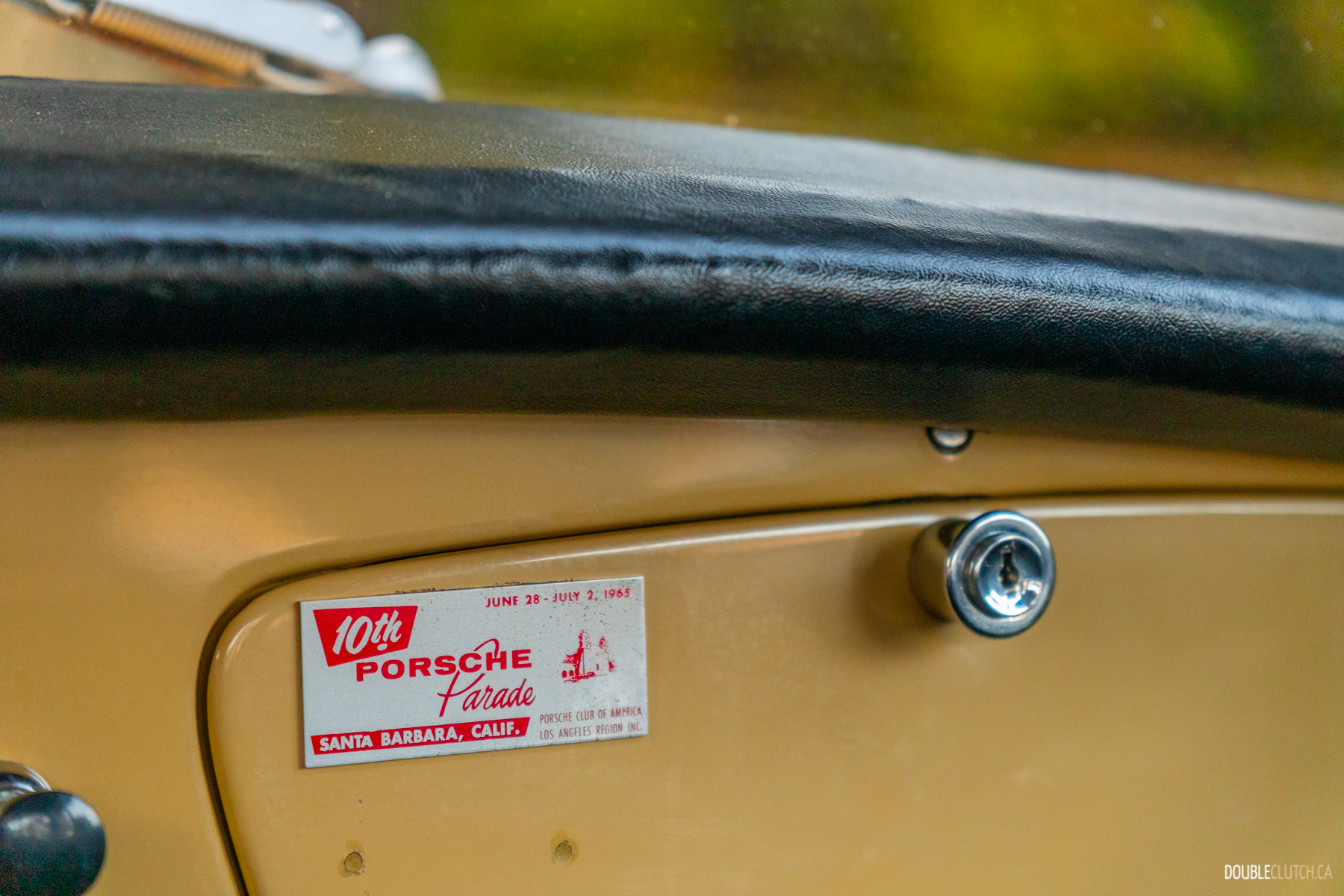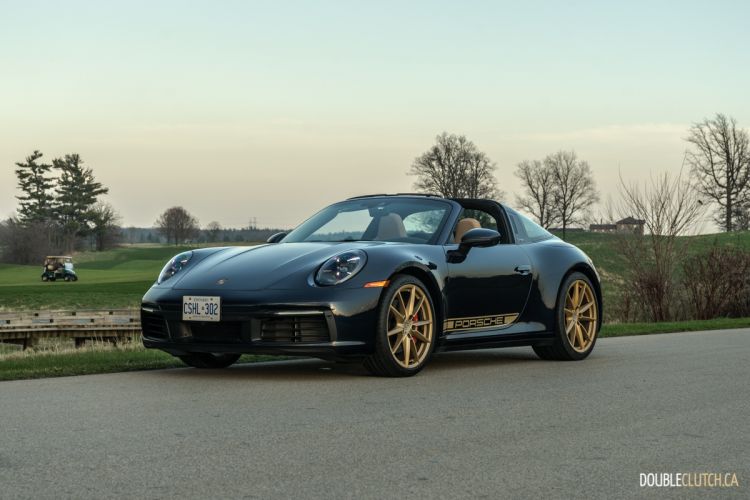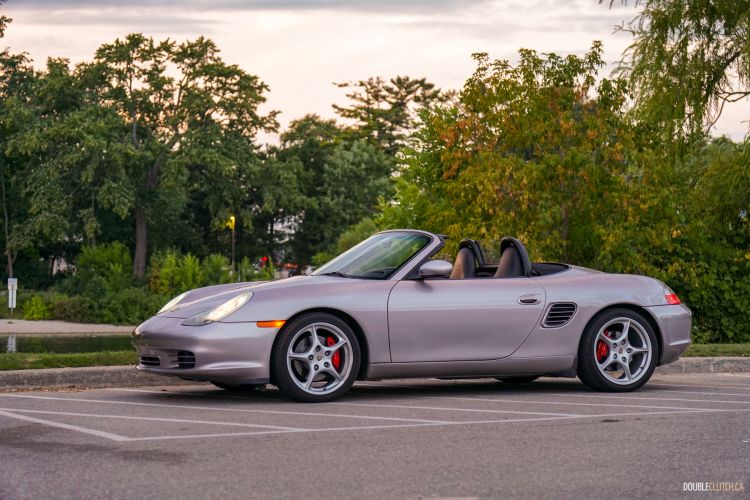You can’t bring up the iconic Porsche 911 without some goon — usually me — making a crack that they’re little more than just a warmed-over Beetle. This hasn’t been even slightly accurate for many, many years, and so now, I’m evaluating a car that hearkens all the way back to when that joke was accurate, before the 911 even existed: a 1963 Porsche 356B Super.
The genesis of the 356 began after the Second World War, with Ferry Porsche’s own Volkswagen Beetle, a cabriolet model fitted with a supercharger. He had driven plenty of fast cars, but really came to appreciate the idea of a lightweight, simple, and nimble little car with a healthy amount of power, rather than something bigger and more focused on muscle.
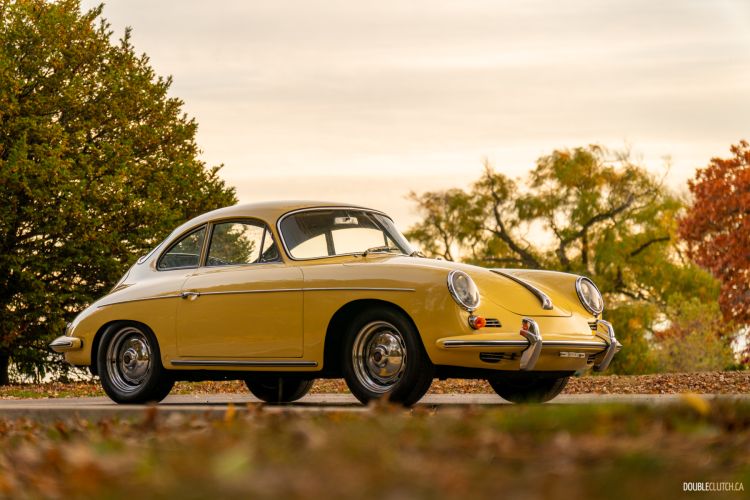
You could hypothesize that he also might have had an inherent bias towards the unique rear-engine Beetle platform, as it was designed from the ground-up by his father, Ferdinand Porsche Sr. — who had been arrested and imprisoned by the French for alleged war crimes. Ferry was also arrested by the French government, but freed after six months. It was a whole thing.
The 356 was part of an effort to resurrect the family’s successful manufacturing and engineering business. His father had an impressive career as chief of design at Daimler-Benz, before going independent and founding Porsche Konstruktionen GmbH, after which he collaborated with Auto Union (who would eventually become Audi) to develop innovative and highly successful mid-engined Grand Prix cars. This caught the attention of, ahem, the German government, who “hired” them to develop an innovative and highly successful economy car … and maybe some military vehicles, but that’s neither here nor there.
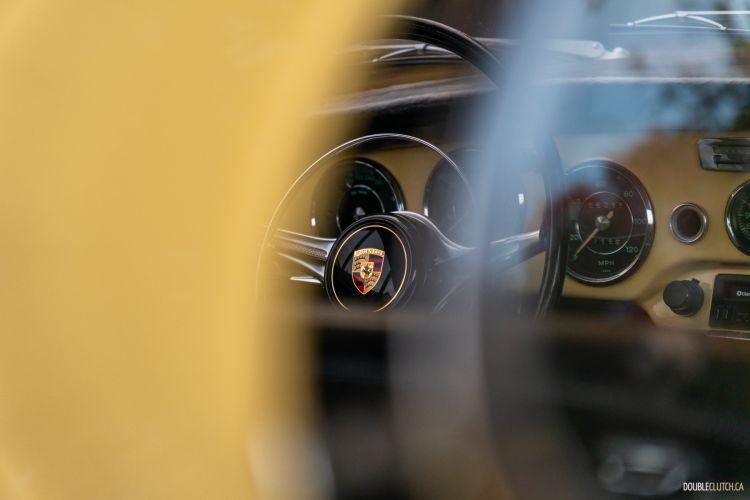
The very first 356 was completed in Gmund, Austria, in June 1948. It was the first production car to bear the Porsche family crest, and it immediately went to a race and won its class, setting the scene for (so many) things to come. The first cars did share an engine and suspension components with the Beetle, but also had a bespoke aluminum body and an entirely new chassis, all to aid in the goal of being a focused sports car.
Sales were slow at first, with only 50 cars coming out of the Gmund facility in two years, but the 356 showed great promise — enough to secure funding from Volkswagen dealers who were willing to pay in full for cars that hadn’t been built yet, and enough to relocate the business back home after Porsche Sr. was released from prison in 1949. With their home factory still under an embargo imposed by the western powers, they contracted Stuttgart coachbuilder Reutter Karosserie to assemble the 356 from 1950 onwards.
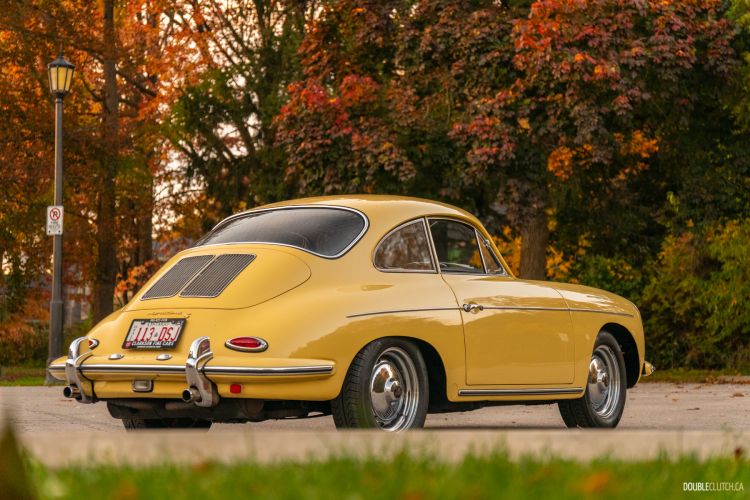
The 356 quickly gained a reputation for its excellent handling performance, and extremely impressive build quality as a result of its careful from-scratch hand assembly. Max Hoffman, the same clairvoyant entrepreneur who convinced Mercedes-Benz to build the 300 SL Gullwing as a production car and make splash in the U.S. market, convinced Porsche to start exporting 356s. The famous, stripped-out and chopped-top “Speedster” model was his idea, perfectly suited to the pavement ribbons of Southern California.
As the little car’s big reputation grew, it grew further and further apart from the Beetle on which it was based. The Beetle influence had been reduced to little more than the basic rear suspension design and some little odds and ends by the time we get to the 1963 car I had the privilege of sampling. In that same year, Porsche ended up buying Reutter Karosserie, and this became the home of their hallowed Zuffenhausen plant, which is still their main production facility and global headquarters today.
(Fun fact: Reutter had a seat manufacturing business that they kept as part of the sale. They renamed it Recaro.)
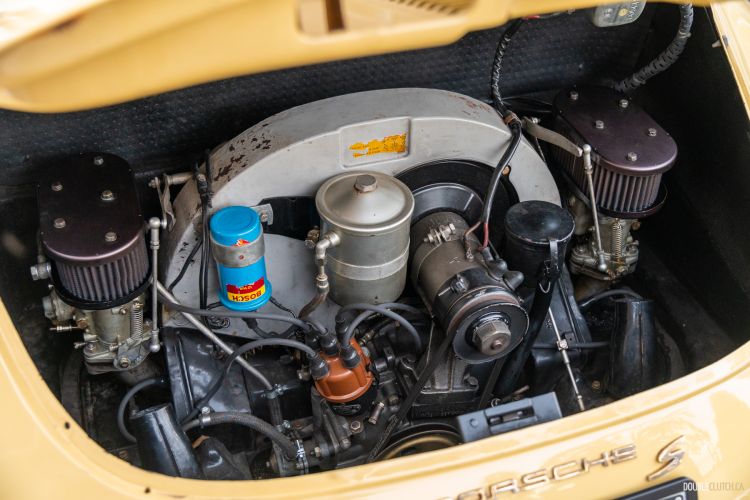
The car I drove is a 356B Super, with the B denoting its evolution of the body and Super denoting its uprated 1,600-cc Boxer four-cylinder engine, producing 75 horsepower — this is where the “S” models of today get their name from. Once warmed up and underway, the engine is lively and eager to respond, with a healthy torque curve that rises linearly with revs. It’s a sharp, satisfying, mechanical-sounding thing, with a deep bassy bellow at high revs that’s vaguely reminiscent of another popular Japanese manufacturer of four-cylinder Boxer engines, albeit with far more auditory presence.
It’s worth noting that the 356B Super doesn’t feel slow. It may only have a double-digit horsepower rating, but Porsche demonstrated over and over again that, when combined with a lightweight car — 1,980 pounds, in this case — it was more than enough to win races and to give Ferrari’s big V12s a hard time. On that note, perhaps the most remarkable thing about driving the 356 is how modern it feels, and how easy it is to drive.
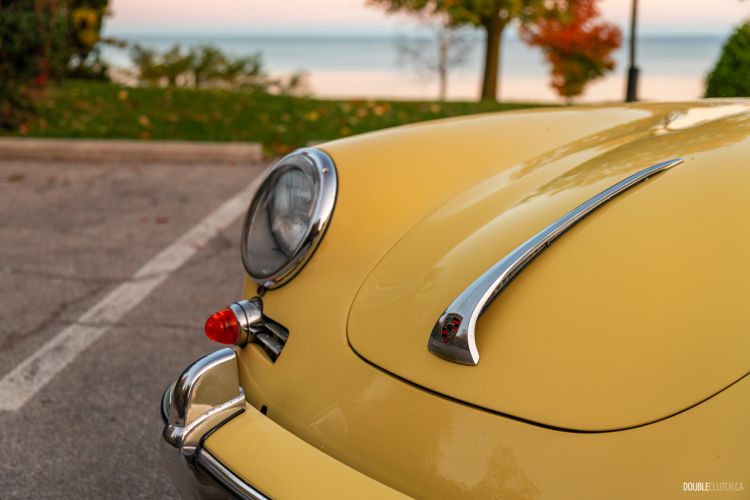
I’ve driven some of those big 12-cylinder Ferraris. Put simply, they’re kinda clunky. They’re hard work to drive, and they don’t really make sense unless you are bombing at a breakneck rate (under which circumstances they make all the sense in the world, but that’s a story for another time). Whereas this much older Porsche was an absolute delight, at any speed. The clutch is super easy to read, the shifter is typical vintage-car-long in its throws, but with a light, delicate action that’s endlessly satisfying.
One of Porsche’s hallmarks has always been magnificent steering feel, and it began here. Even without powered assistance of any kind, there’s so little weight over the front end that the dainty, thin-rimmed steering wheel is softly weighted and incredibly talkative. It’s so easy to read, and it leads to a car that’s exceedingly entertaining to wind up through the gears and pitch through a corner.
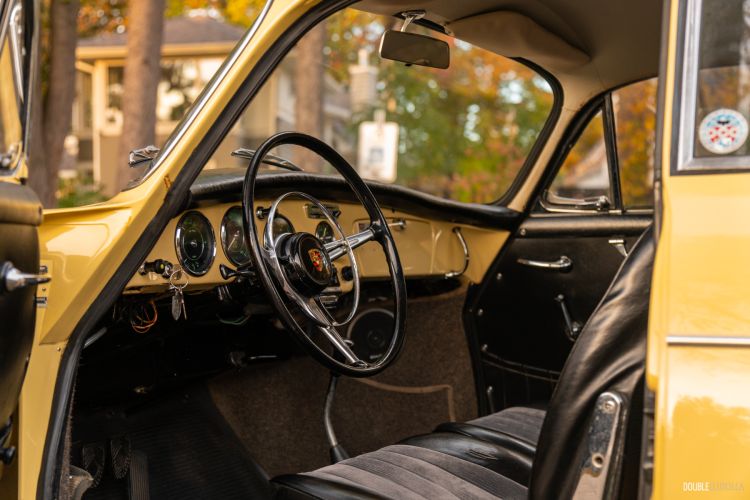
It’s generally ergonomically sound, too. The driving position is typical Porsche-excellent, and visibility is terrific, as you sit close to the curved windscreen and have a panoramic view of the road from your cozy cockpit. You can really feel the family resemblance to the decades of 911 that followed. The pedals are typical Porsche, perfectly set up for heel-and-toe downshifting. The only real hang-up is the response from the brake pedal; disc brakes didn’t come to Porsche until 1964, and while the 356B’s pedal is firm and fairly linear, they are not at all reassuring when you start pushing further into it.
The 356B is surprisingly comfortable too, with its low mass and classic pillowy tires leading to impressive ride quality. The lithe teardrop shape slices through the air, and as such, there’s remarkably little wind noise, too. It’s screwed together impeccably well, and every single material and piece of switchgear feels durable, almost like Porsche expected these cars to be well used and driven hard for decades. More than a few of these cars famously reached incredibly high mileage readings over the years, with one being well over a million miles.

Now having experienced one, I totally get why the 356 is so adored, and in some cases, still driven regularly. I remember recently seeing a couple parked in driveways in the canyons above Malibu, and was even passed by a Speedster that obviously knew the terrain better than I did. I can scarcely imagine a better chariot for such an environment. It’s such a satisfying, delightful, and easy car to helm that I didn’t want to stop driving it.
At the beginning of this project, Ferry Porsche estimated they might be able to sell 1,500 cars. In 1954, their first year of exporting to the US, they shifted 10,000, and the final number ended up being around 76,000 by the time the 356 was phased out in 1965. It may have begun as a Hail Mary to save the family business, and it may be able to trace its roots to the humble People’s Car, but what Ferry turned it into — both in this 1963 Porsche 356B Super, and the pantheon of world-beating sports and racing cars that followed — is the literal stuff of legend.

